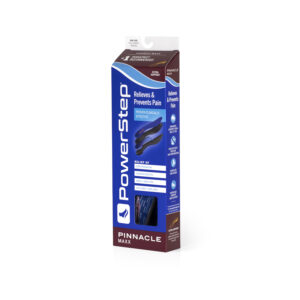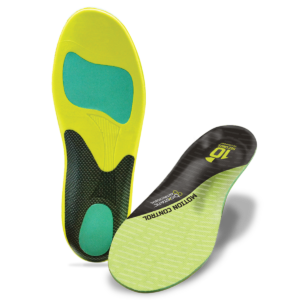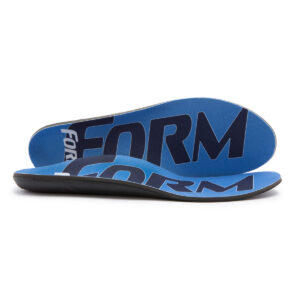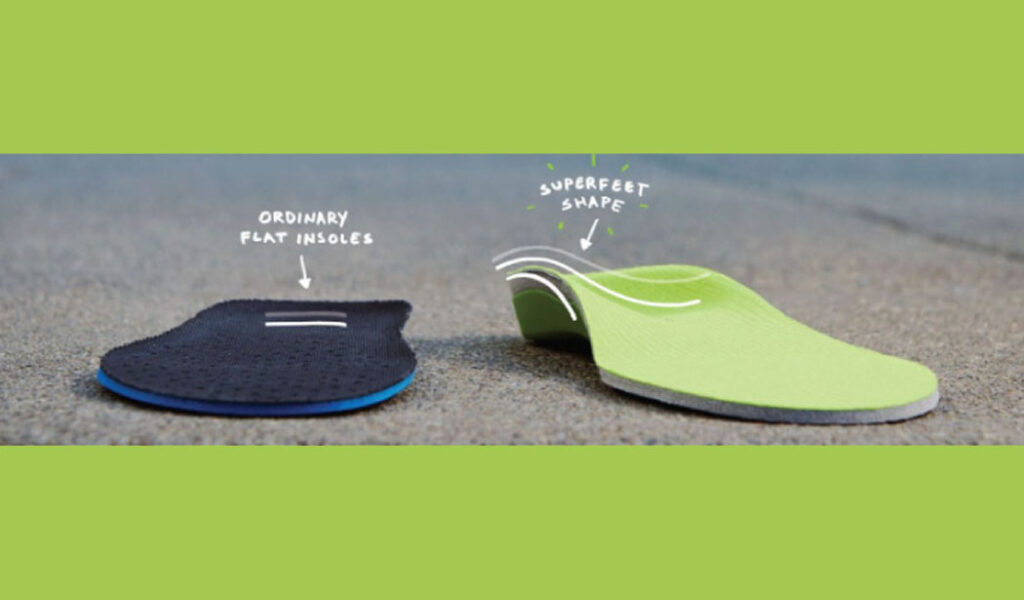Do you have flat feet? It is possible that you have fallen arches. Fallen arches occur when the normal curve of the arch collapses due to weakening of tendons in the ankle. This usually occurs during adulthood, at times due to injury but not always.
The technical medical term for a fallen arch or flat foot is “pes planus.” The fallen arch is usually directly associated with overpronation in the gait cycle. The ankles roll in as the arch collapses with each step. The result of this can cause foot and heel pain such as plantar fasciitis. It can also cause ankle, knee, hip, or back pain related to the gait cycle.
How did I get fallen arches?
Are you wondering if your arches have fallen? Why does this happen? The cause of a fallen arch is usually the weakening or injury of the posterior tibial tendon. The PTT is the tendon responsible for attaching the calf muscle to certain bones within the foot. The tendon supports the arch, and a healthy tendon is necessary for good arch formation.
Fallen arches are often referred to as Posterior Tibial Tendon Dysfunction (PTTD) and acquired flat foot deformity. At times they cause just minor discomfort but for some people they are very painful. The arch may collapse or fall in just one foot, or it may happen in both feet simultaneously. Fallen arches are usually a progressive condition and will worsen over time without treatment.
It is important to begin treating falling arches as soon as the condition is noticed. Work with your doctor and footcare specialist for proper diagnosis and treatment. Associated conditions to fallen arches can also develop, including but not limited to plantar fasciitis or tendonitis. Your treatment may vary depending on additional conditions that my develop.
If your arches are falling it is also important to pay attention to your shoe size. Some people think that your feet grow as you get older, but as your arches lower your feet lengthen. Shoe sizes can increase by a half or even one or two sizes bigger over a lifetime. Make sure to have your feet measured and properly fitted. A straight last shoe may be most beneficial for proper support for the condition.
What can be done to treat fallen arches?
Consult with a doctor to determine the best methods of treatment in your case. They may recommend physical therapy to focus on strengthening the posterior tibial tendon. This can help to strengthen the arches and associated muscles and tendons and reduce the discomfort that fallen arches can cause. They may have other forms of treatment recommendations. They will also diagnose whether any associated conditions are also present.
Some of the greatest relief for fallen arches can be provided by supporting the arch with insoles. Insoles will help to keep the natural shape of the arch when standing. They prevent the foot from flattening out with every step, therefore decreasing the stress on the arch and the associated tendons. Using insoles for falling arches will usually decrease the discomfort and provide some pain relief. Often high quality over the counter insoles will provide the needed relief. If the condition has severely progressed, then custom orthotics may be necessary.
The RICE method can be helpful if your condition is painful. It is an effective way to bring inflammation down. For home treatment, the RICE method can help considerably with the swelling and pain. RICE stands or Rest, Ice, Compression, and Elevation and can prove effective for many minor injuries and strains.
When you have fallen arches, it is also extremely important to wear supportive shoes. Supportive shoes play an important role in reducing pain and fatigue from fallen arches. It also supports the arch to reduce the stress put on the tendons. Make sure your shoes are not too flimsy and flexible. It is also a good idea to wear shoes within the house so that you are always supporting the falling arch.
Insoles and Orthotics for Fallen Arches
If you have fallen arches you will likely want insoles for your shoes. In some extreme cases custom orthotics may be necessary. But for many people a high quality over the counter insole will provide the support and comfort they need. Here are a few options of the best quality over the counter insoles from insoles.com
Cadence Insoles
Designed by a physical therapist, the Cadence insoles use the highest quality materials with a semi-rigid stability plate for support. The thick layer of cushioning provides excellent shock absorption

Powerstep Pinnacle Maxx
An angled heel post on the medial side of the heel cup provides extra support for a falling arch, helping to prevent the heel from rolling inward

10 Seconds Motion Control
Helps to control overpronation plus combined with a metatarsal pad to provide relief of any forefoot discomfort such as metatarsalgia or Morton’s neuroma

Form Maximum
One of the few over-the-counter customizable insole on the market. These insoles have the option of simple do-it-yourself heat molding to your unique feet. They come with a 100 day “Love them or your money back” guarantee from Form so you can try them risk free. For individuals weighing over 200 pounds the Form Reinforced is recommended





